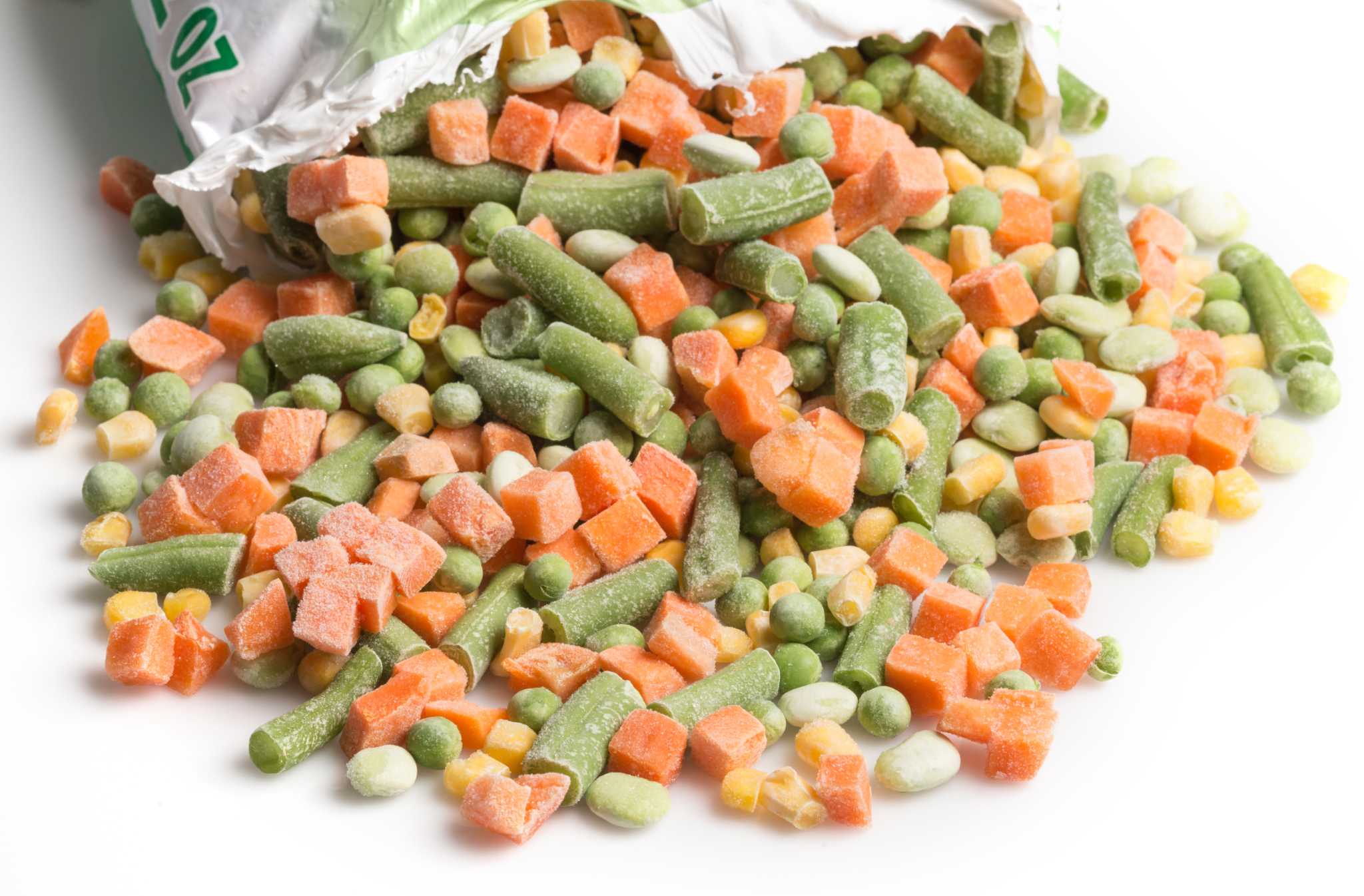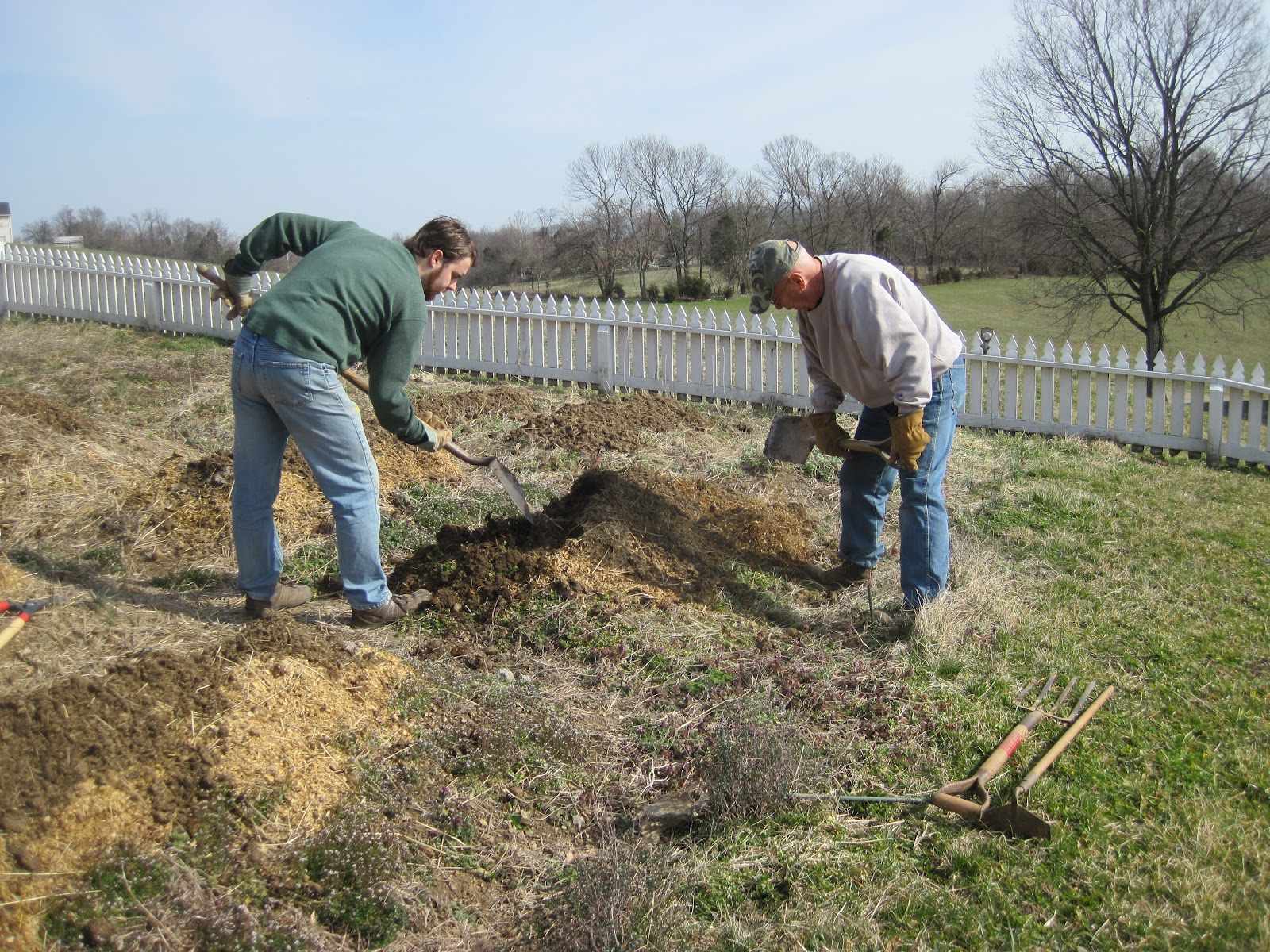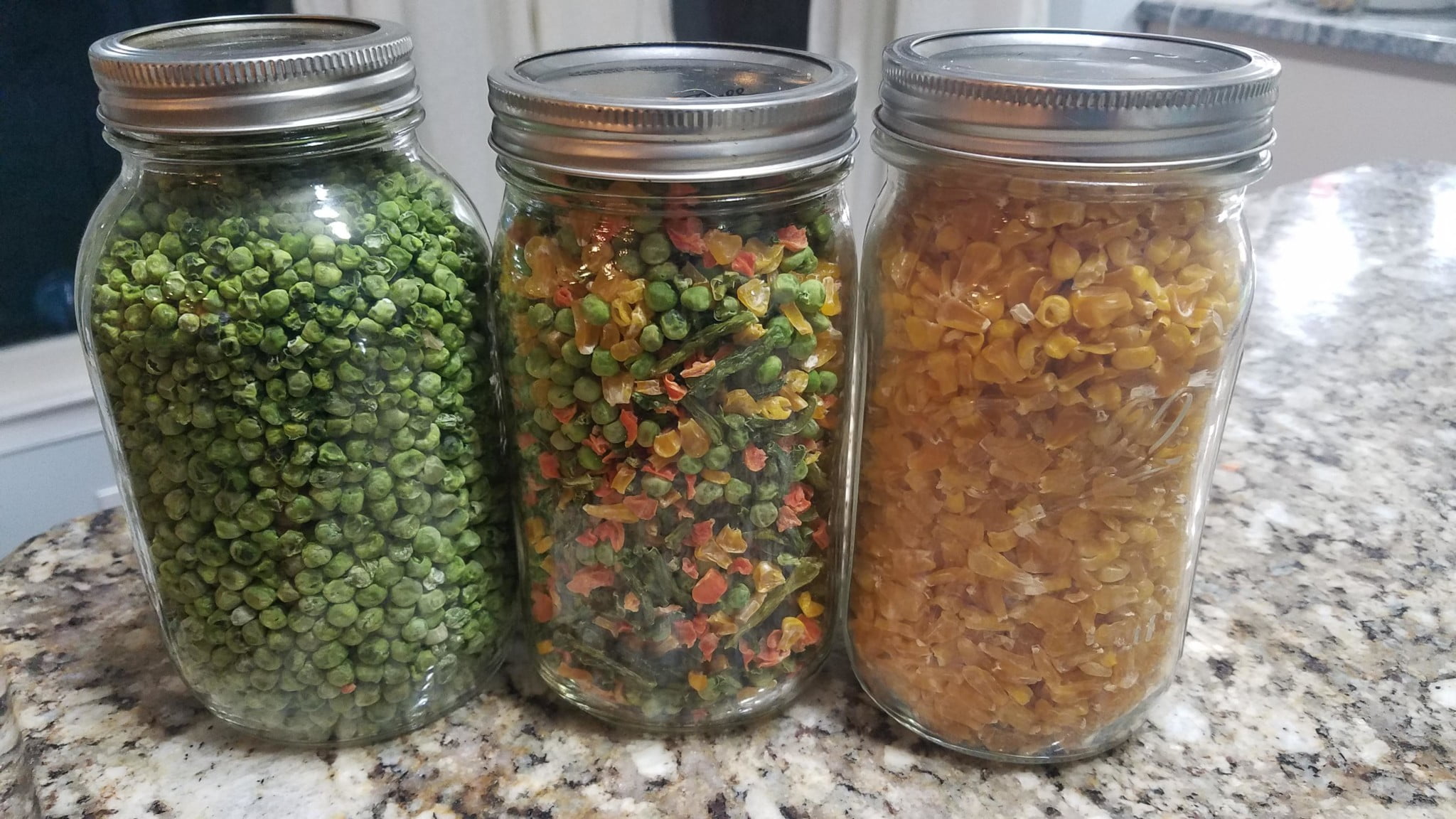Home>Gardening News and Trends>Latest News>What Is The Frozen Soil Of The Tundra Called


Latest News
What Is The Frozen Soil Of The Tundra Called
Published: February 10, 2024
Discover the Latest News about the Frozen Soil of the Tundra, also known as Permafrost. Understand its unique characteristics and the effects of climate change on this fragile ecosystem.
(Many of the links in this article redirect to a specific reviewed product. Your purchase of these products through affiliate links helps to generate commission for Chicagolandgardening.com, at no extra cost. Learn more)
Table of Contents
- Introduction
- Definition of the Tundra
- Overview of Frozen Soil in the Tundra
- Characteristics of the Frozen Soil
- Formation and Processes of Freezing
- Permafrost: The Permanent Frozen Soil of the Tundra
- Active Layer: The Seasonally Thawed Zone
- Importance of Frozen Soil in the Tundra
- Effects of Thawing Permafrost
- Conclusion
Introduction
Welcome to the world of the tundra, a vast and diverse ecosystem characterized by its icy landscapes and extreme temperatures. At the heart of the tundra lies a unique feature that plays a crucial role in the functioning of this ecosystem – the frozen soil. Also known as permafrost, this frozen ground acts as a frozen reservoir, shaping the tundra’s geography and influencing its plant and animal life.
The tundra is a type of biome found in the Earth’s coldest regions, including the Arctic and parts of Antarctica, as well as high mountainous regions. It is defined by its long, harsh winters, short summers, and the absence of trees due to the extreme climatic conditions. This barren and frigid environment is home to a variety of specialized plants and animals that have adapted to survive in these challenging conditions.
One of the distinguishing features of the tundra is its frozen soil, which remains frozen for a significant part of the year. This frozen ground is vital to the functioning of the ecosystem, as it provides stability to the landscape and supports a unique array of plant and animal life. In this article, we will delve into the world of the frozen soil in the tundra, exploring its characteristics, formation processes, and the important role it plays in this delicate ecosystem.
Definition of the Tundra
The tundra is a biome characterized by its extremely cold temperatures, low precipitation, and short growing season. It is primarily found in the Earth’s northern regions, such as the Arctic, but can also be found in high mountainous areas. The word “tundra” comes from the Finnish word “tunturi,” which means treeless plain, reflecting the lack of trees in this unique ecosystem.
Unlike other biomes, such as forests or grasslands, the tundra has a distinct lack of trees due to the harsh climate. Instead, it is dominated by low-lying vegetation, such as grasses, sedges, mosses, and lichens, which have adapted to survive in the cold and harsh conditions. These hardy plants grow close to the ground, forming a dense carpet-like covering.
In addition to a cold climate, the tundra experiences long and dark winters, with temperatures often dropping well below freezing. The summers, although short, bring a brief period of warmer temperatures, allowing the top layer of the soil to thaw and facilitating plant growth. The extreme temperature fluctuations and lack of tree cover make the tundra vulnerable to erosion and soil degradation.
The tundra biome can be further classified into two types: the Arctic tundra and the alpine tundra. The Arctic tundra is found in the northernmost regions of the world, within the Arctic Circle, whereas the alpine tundra is found at high altitudes in mountainous areas around the globe. While they share similarities in terms of climate and vegetation, each type has its own unique characteristics and species.
The tundra is not only a challenging environment for plant life, but it also presents difficulties for animal life. However, despite the harsh conditions, the tundra is home to a diverse range of species, including migratory birds, caribou, reindeer, arctic foxes, and polar bears. These animals have developed adaptations to survive the cold temperatures, scarce food resources, and long periods of darkness.
Overview of Frozen Soil in the Tundra
One of the defining features of the tundra ecosystem is its frozen soil, also known as permafrost. Permafrost is characterized by having a temperature below freezing (0°C) for a significant portion of the year, sometimes remaining frozen year-round. It is a critical component of the tundra, shaping its geography and influencing the distribution and behavior of both plants and animals.
The frozen soil in the tundra is predominantly made up of a mixture of soil, rock, and ice, with varying proportions depending on the location and depth. The ice content within the frozen soil can range from a few percent up to as much as 90 percent in some areas. This high ice content gives permafrost its distinct frozen and solid nature.
Permafrost can extend several meters deep into the ground, forming a continuous layer beneath the surface of the tundra. It acts as a natural barrier, inhibiting the movement of water and creating unique hydrological conditions within the ecosystem. The frozen soil effectively acts as a sponge, trapping water in the ground and impeding its ability to drain away, leading to the formation of ponds, lakes, and wetlands.
Permafrost is not completely uniform in its distribution across the tundra. It can have variations in depth and thickness, with thicker permafrost found in colder regions and at higher latitudes. Additionally, the top layer of permafrost, known as the active layer, thaws during the summer months, allowing a limited amount of plant growth and supporting a seasonal variety of wildlife.
Understanding the characteristics of frozen soil in the tundra is essential for comprehending the functioning of this unique ecosystem. The frozen ground acts as a frozen reservoir, storing nutrients and organic matter that would typically decompose in warmer environments. This results in a distinct and fragile soil structure, with specific adaptations required for plants to grow and thrive.
Unlocking the secrets of the frozen soil in the tundra is critical for studying climate change and its impact on this delicate ecosystem. As global temperatures rise, there is concern about the degradation and thawing of permafrost, which can lead to the release of significant amounts of greenhouse gases, such as carbon dioxide and methane, into the atmosphere.
In the following sections, we will explore the characteristics of frozen soil, the processes of freezing, the significance of permafrost, and the potential consequences of thawing permafrost in the tundra ecosystem.
Characteristics of the Frozen Soil
The frozen soil of the tundra, commonly known as permafrost, possesses unique characteristics that distinguish it from unfrozen soil. These characteristics play a crucial role in shaping the dynamics of the tundra ecosystem. Let’s explore some of the key features of frozen soil:
- Frozen State: As the name suggests, permafrost remains in a frozen state for a significant portion of the year, with temperatures below freezing point (0°C) for extended periods. This frozen state is responsible for the unique properties and challenges associated with frozen soil.
- Ice Content: The ice content in permafrost can vary widely and is a defining characteristic of frozen soil. The ice may be present in the form of ice lenses, ice wedges, or massive ice bodies. The ice content directly influences the strength, stability, and thermal properties of the frozen soil.
- Low Porosity and Permeability: Frozen soil has low porosity and permeability, meaning that it has limited ability to hold and transmit water. This is attributed to the ice occupying the pore spaces within the soil matrix. The low permeability restricts water movement, resulting in the formation of wetlands and waterlogged areas in the tundra.
- Frozen Organic Matter: Permafrost contains preserved organic matter, such as dead plant material and animal remains, that has accumulated over thousands of years. The frozen environment slows down the decomposition process, resulting in a buildup of organic carbon in the soil. This makes permafrost a significant global carbon reservoir.
- Thermal Conduction: Frozen soil exhibits low thermal conductivity, which means it does not conduct heat well. This property helps to insulate the underlying ground, keeping it cold and preventing thawing. The thermal characteristics of permafrost are vital for understanding its stability and the impact of climate change.
- Ground Movements: Frozen soil experiences ground movements, such as frost heave and solifluction. Frost heave occurs when the ground swells due to the freezing of moisture within the soil, resulting in the upward displacement of the ground surface. Solifluction, on the other hand, is the slow downhill movement of frozen soil due to the presence of water from thawed upper layers.
These characteristics of frozen soil create a unique environment that poses challenges and opportunities for living organisms in the tundra. The frozen ground influences the availability of water, nutrient cycling, and the stability of the landscape. It also affects the distribution and adaptation of plants and animals in this extreme and fragile ecosystem.
Formation and Processes of Freezing
The formation and freezing processes of permafrost in the tundra are influenced by a combination of factors, such as climate, geology, and vegetation. Understanding these processes is crucial for comprehending the distribution and characteristics of frozen soil in this unique ecosystem. Let’s delve into the formation and processes of freezing:
1. Climate: The cold climate of the tundra plays a key role in the formation of permafrost. The long, cold winters with temperatures below freezing cause the ground to freeze, creating frozen soil. The duration and intensity of cold temperatures determine the thickness and extent of permafrost in a given area.
2. Geology: The geological composition of the tundra also contributes to the formation of permafrost. Factors such as soil structure, particle size, and mineral composition impact the freezing process. Fine-grained soils, such as silt and clay, have a higher water-holding capacity, making them more susceptible to freezing.
3. Vegetation: Vegetation in the tundra can affect permafrost formation. Plant cover can provide insulation, reducing the ability of the ground to freeze. In areas with dense vegetation, the insulating effect can prevent permafrost formation altogether. However, in areas with low or sparse vegetation, the ground is more exposed to the cold air, promoting freezing.
4. Freezing Processes: The freezing of soil occurs through several interconnected processes. These processes include:
- Frost Penetration: As winter temperatures drop, moisture in the soil begins to freeze from the surface downward. The freezing front progressively advances into the ground, forming ice lenses and wedges.
- Cryosuction: Cryosuction is a process whereby frozen soil acts like a sponge, pulling moisture from unfrozen soil layers above. This occurs due to the pressure difference between the frozen and unfrozen areas, causing water migration and subsequent freezing.
- Ice Segregation: Ice segregation occurs when water in the soil migrates and accumulates in certain areas due to temperature variations. As the water freezes, it expands and forms ice lenses or ice wedges, leading to ground deformation and frost heave.
- Frost Wedging: Frost wedging refers to the cracking and fracturing of rocks and soil caused by repeated freezing and expansion of water within pore spaces. Over time, this process can contribute to the formation of distinct features, such as patterned ground or ice polygons.
These processes of freezing in the tundra contribute to the formation and development of permafrost. The resulting frozen soil landscape is intricately shaped by the interaction of climate, geology, vegetation, and freezing processes. This frozen ground forms the foundation for the unique and fragile tundra ecosystem, influencing its vegetation patterns, hydrological dynamics, and overall ecosystem function.
Permafrost: The Permanent Frozen Soil of the Tundra
Permafrost, often referred to as the permanent frozen soil, is a defining characteristic of the tundra ecosystem. It is a layer of frozen ground that remains at or below 0°C for two or more consecutive years. Permafrost is critical to the functioning of the tundra and has profound implications for the landscape, vegetation, and wildlife. Let’s explore the significance and features of permafrost:
Extent and Distribution: Permafrost covers a substantial portion of the Arctic and tundra regions, including vast areas of Alaska, Canada, Siberia, and Greenland. It is estimated that approximately 24% of the Earth’s land surface contains permafrost. The distribution of permafrost is influenced by local climate, geology, and vegetation cover.
Thickness and Layers: Permafrost can vary in thickness, ranging from a few centimeters to several hundred meters. It is often composed of distinct layers, including the active layer and multiple layers of permanently frozen ground. The thickness and composition of these layers are influenced by factors such as the duration of freezing, insulation from vegetation, and thermal conductivity of the soil.
Ground Stability and Settlement: Permafrost acts as a stabilizing force in the tundra ecosystem. The frozen ground provides structural integrity to the landscape, preventing or minimizing ground settlement. In areas of continuous permafrost, infrastructure such as buildings and roads must be carefully designed to avoid damaging the ground stability.
Hydrological Impacts: Permafrost plays a significant role in the hydrological cycle of the tundra. It acts as a natural barrier, preventing water from percolating deeper into the ground. This results in the formation of wetlands and the creation of unique waterlogged habitats. Thawing of permafrost can disrupt the hydrological balance and lead to changes in water availability and quality.
Carbon Storage: Permafrost is a substantial reservoir of organic carbon. The frozen ground inhibits the decomposition of organic matter, causing it to accumulate over thousands of years. It is estimated that permafrost holds twice as much carbon as currently exists in the Earth’s atmosphere. Thawing of permafrost can release significant amounts of carbon dioxide and methane, contributing to climate change.
Climate Change Impact: Climate change poses a significant threat to permafrost. Rising temperatures can cause permafrost to thaw, leading to ground instability, changes in vegetation, and the release of greenhouse gases. This feedback loop has the potential to accelerate global warming and have far-reaching consequences for the tundra ecosystem and beyond.
Understanding the characteristics and importance of permafrost is essential for managing and conserving the tundra ecosystem. Ongoing research and monitoring efforts are crucial to assess the impacts of climate change and develop strategies to mitigate its effects on this fragile frozen soil. Preserving the integrity of permafrost is not only vital for the tundra ecosystem but also for global climate stability.
Active Layer: The Seasonally Thawed Zone
Within the tundra ecosystem, the active layer is a vital component of the frozen soil. Unlike the underlying permafrost, the active layer is the seasonally thawed zone that experiences temporary freezing and thawing during the year. This layer plays a crucial role in supporting plant growth, nutrient cycling, and various ecological processes. Let’s explore the characteristics and significance of the active layer:
Thawing and Freezing: The active layer thaws during the summer months when temperatures rise above freezing point, allowing water to flow and biological activity to occur. Thawing depth varies depending on factors such as air temperature, snow cover, and vegetation. In winter, the active layer freezes again as temperatures drop, effectively halting biological processes.
Seasonal Vegetation: The active layer provides the necessary conditions for plant growth in the tundra. As the layer thaws, it creates a moist and nutrient-rich environment that enables the germination and growth of various plant species. Grasses, sedges, mosses, and lichens take advantage of the brief growing season, flowering, and producing seeds during this time.
Nutrient Cycling: The active layer is crucial for nutrient cycling in the tundra ecosystem. As the layer thaws, soil microorganisms become active, breaking down organic matter and releasing nutrients into the soil. These nutrients are then available for plant uptake and contribute to the productivity and diversity of the vegetation in the tundra.
Wildlife Habitat: The active layer supports a range of wildlife in the tundra. Migratory birds, insects, small mammals, and herbivores rely on the vegetation and insects that flourish in the active layer during the short summer months. Predators, such as foxes and wolves, also depend on the availability of prey that is sustained by the active layer’s productivity.
Erosion and Landforms: Erosion is a common phenomenon in the active layer due to its susceptibility to physical processes. Water movement, freeze-thaw cycles, and mass wasting can result in the creation of distinct landforms, such as patterned ground and ice-wedge polygons. These landforms contribute to the unique landscape and are indicative of the dynamic nature of the active layer.
The active layer acts as an interface between the frozen permafrost and the living components of the tundra ecosystem. It plays a crucial role in regulating and supporting various ecological processes, enabling the growth and survival of vegetation, as well as providing habitat and resources for a diverse range of wildlife. The active layer’s sensitivity to climate change and its influence on the overall ecosystem make it an essential area for ongoing research and monitoring efforts.
Importance of Frozen Soil in the Tundra
The frozen soil of the tundra, specifically permafrost, plays a crucial role in the functioning and stability of this unique ecosystem. It has significant ecological, hydrological, and climatic importance. Let’s explore the key reasons why frozen soil is vitally important in the tundra:
1. Habitat and Biodiversity: Permafrost provides habitat for a diverse range of plant and animal species in the tundra. It supports unique vegetation adapted to cold conditions and provides nesting grounds and food sources for various migratory birds, mammals, and insects. The stability of the frozen soil offers vital support for the biodiversity of the tundra ecosystem.
2. Nutrient Storage and Cycling: Permafrost acts as a frozen reservoir for nutrients and organic matter. The cold temperatures and limited decomposition in the frozen soil preserve organic carbon and other nutrients over long periods of time. When permafrost thaws seasonally, the organic matter releases nutrients into the soil, supporting the growth of plants and contributing to the nutrient cycling process.
3. Hydrological Regulation: Permafrost plays a crucial role in regulating the hydrological processes in the tundra. The frozen soil acts as a natural barrier, preventing excessive water percolation and promoting the formation of wetlands and waterlogged areas. The slow drainage due to permafrost influences water availability, contributing to the creation of diverse aquatic habitats in the tundra ecosystem.
4. Carbon Storage and Climate Regulation: Permafrost contains vast amounts of frozen organic carbon, making the tundra a significant global carbon reservoir. The stable frozen state of permafrost prevents the release of carbon dioxide and methane into the atmosphere. However, as permafrost thaws, the organic matter decomposes, releasing greenhouse gases and potentially contributing to climate change.
5. Landscape Stability: Frozen soil provides stability to the tundra landscape. Permafrost serves as a solid foundation, preventing excessive soil erosion and land degradation. It helps maintain the integrity of landforms, such as hills, valleys, and frozen lakes, which are vital for the ecological balance of the tundra and the survival of its unique flora and fauna.
6. Cultural and Economic Importance: The frozen soil has cultural and economic significance for indigenous communities and local populations in the tundra region. Permafrost influences traditional practices, including hunting, fishing, and transportation. It also supports infrastructure, such as buildings, roads, and pipelines. Understanding permafrost dynamics is crucial for sustainable development and ensuring the well-being of local communities.
The importance of frozen soil in the tundra cannot be overstated. Its role in providing habitat, regulating hydrological processes, storing carbon, and maintaining landscape stability is vital for the overall health and functioning of the tundra ecosystem. As the effects of climate change intensify, the preservation and careful management of frozen soil become increasingly important for the resilience and long-term sustainability of the tundra and its inhabitants.
Effects of Thawing Permafrost
The thawing of permafrost in the tundra has significant implications for the environment, ecosystems, and global climate. As the Earth’s temperatures continue to rise, the process of thawing permafrost accelerates, resulting in several profound effects. Let’s explore some of the key consequences of permafrost thawing:
1. Greenhouse Gas Emissions: Thawing permafrost can release significant amounts of greenhouse gases, such as carbon dioxide and methane, into the atmosphere. The organic matter trapped in the frozen soil decomposes as it thaws, leading to the production and release of these potent greenhouse gases. This can create a positive feedback loop, further exacerbating global warming and climate change.
2. Changes in Vegetation: Thawing permafrost can lead to shifts in vegetation patterns in the tundra. As the frozen ground thaws, new areas become suitable for plant growth, allowing for the expansion of shrubs and trees into areas previously dominated by grasses and mosses. These changes in vegetation composition can have cascading effects on the whole ecosystem, influencing wildlife habitats, food availability, and biodiversity.
3. Altered Hydrology: Thawing permafrost can disrupt the hydrological balance in the tundra. As permafrost thaws, the previously impermeable frozen ground becomes saturated with water, leading to increased runoff and changes in drainage patterns. This can result in increased erosion, changes in water availability, and the formation of new wetland areas.
4. Infrastructure Damage: Thawing permafrost poses a significant risk to infrastructure in tundra regions. Buildings, roads, pipelines, and other infrastructure that are built on permafrost may experience damage or instability as the frozen soil thaws. Structures that rely on the stability of the frozen ground may sink, tilt, or develop cracks, leading to costly repairs and potential safety hazards.
5. Release of Ancient Microorganisms and Pathogens: Thawing permafrost can expose ancient microorganisms and pathogens that have been trapped in the frozen ground for thousands of years. As the permafrost thaws, these microorganisms can become reactivated and potentially pose health risks to humans, wildlife, and livestock. This poses a potential threat to public health and requires careful monitoring and research.
6. Feedback Loop and Amplified Warming: Thawing permafrost is part of a self-reinforcing feedback loop; as permafrost thaws and releases greenhouse gases, it contributes to further warming. The released greenhouse gases trap heat in the atmosphere, perpetuating the cycle of thawing permafrost and amplifying the effects of climate change.
It is crucial to recognize and address the effects of thawing permafrost to mitigate the impacts on the environment and global climate. Understanding these consequences helps inform climate change mitigation strategies, land use planning, and conservation efforts in the tundra and beyond. Preserving the integrity of permafrost becomes increasingly important as we strive to mitigate climate change and protect the delicate balance of the tundra ecosystem.
Conclusion
The frozen soil of the tundra, known as permafrost, is an essential component of this unique and fragile ecosystem. It plays a crucial role in shaping the landscape, supporting a diverse range of plants and animals, regulating hydrological processes, and storing vast amounts of carbon. However, with rising temperatures and the effects of climate change, permafrost is under threat, leading to significant consequences for the tundra and beyond.
As permafrost thaws, it releases greenhouse gases, contributing to global warming and climate change. The changes in vegetation, altered hydrology, and potential damage to infrastructure further highlight the impact of thawing permafrost. These effects not only affect the tundra ecosystem but also have broader implications for global climate stability, biodiversity, and human well-being.
Preserving the integrity of frozen soil in the tundra is crucial for mitigating the impacts of climate change and maintaining the delicate balance of this unique ecosystem. Efforts must be made to reduce greenhouse gas emissions and implement sustainable land management practices to minimize further thawing of permafrost. Ongoing research, monitoring, and collaboration are essential to better understand the complex interactions of permafrost with climate, vegetation, and wildlife.
The tundra ecosystem and its frozen soil are of immense value, both in terms of biodiversity and cultural heritage. As we navigate the challenges of a changing climate, it is vital to recognize the importance of the tundra and take proactive measures to protect and conserve its frozen soil. Only by doing so can we ensure the long-term resilience and sustainability of the tundra ecosystem for future generations.








